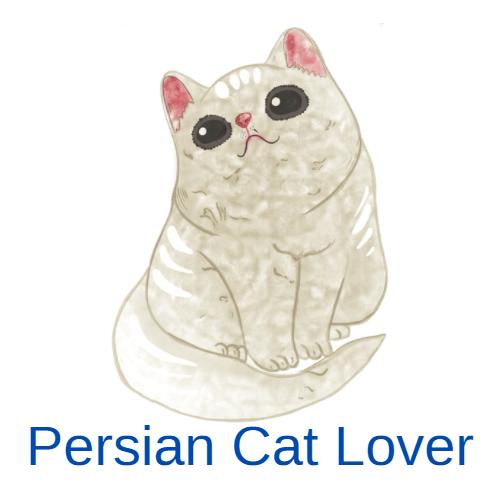Bathtime can be a challenging task for Persian cat owners, as these feline companions are known to have a natural aversion to water. However, with the right approach and techniques, you can make bathtime a fun and enjoyable experience for your Persian cat.
Understanding your Persian cat’s behavior with water is crucial in ensuring a successful bathtime. Persian cats, known for their long and luxurious coats, may have developed a dislike for water due to their breeding history and genetic predispositions. They may also be sensitive to the sound and feel of water, making them less enthusiastic about bathtime.
To help your Persian cat overcome their fear of water, it is important to introduce them to water gradually and create a positive association. Start by preparing for a successful bathtime by gathering the necessary supplies, creating a calm and safe environment, and introducing your Persian cat to water in a gentle and gradual manner.
Making bathtime enjoyable for your Persian cat involves using fun techniques such as using treats as positive reinforcement, incorporating toys and interactive play, and providing gentle massages and petting to help them relax during the process.
When actually giving your Persian cat a bath, it is important to use lukewarm water and cat-friendly shampoo to ensure their comfort and safety. Maintaining a steady and firm grip on your Persian cat is crucial, as their long hair can become slippery when wet. After bathtime, it is essential to dry your Persian cat thoroughly and gently to prevent any discomfort or skin issues.
If, despite your efforts, your Persian cat still dislikes bathtime, there are alternatives to explore. These may include alternatives to bathing, such as dry shampoos or grooming wipes, or seeking professional assistance from a cat groomer.
By implementing these strategies and being patient and understanding, you can make bathtime a positive and enjoyable experience for your beloved Persian cat while maintaining their hygiene and grooming needs.
Key takeaway:
- Making Bathtime Fun for your Persian Cat: Learn how to create a positive experience for your Persian cat during bath time to make it more enjoyable for both you and your cat.
- Understanding Your Persian Cat’s Behavior with Water: Discover why Persian cats may be less enthusiastic about water and find ways to help them overcome their fear.
- Fun Techniques to Make Bathtime Enjoyable: Explore different techniques, such as using treats, toys, and gentle massages, to make bathtime a positive and relaxing experience for your Persian cat.
Making Bathtime Fun for Your Persian Cat
Making bathtime fun for your Persian cat can be a challenge, but with a few tips, you can turn it into an enjoyable experience for both you and your feline friend.
- Prepare the bathing area: Ensure that the bathing area is warm and comfortable for your Persian cat. Place a non-slip mat in the tub or sink to provide stability and prevent accidents.
- Choose the right shampoo: Use a gentle and hypoallergenic shampoo specifically formulated for cats. Avoid using human shampoos, as they can irritate your cat’s skin.
- Introduce your cat to water gradually: Start by slowly introducing your cat to water by allowing them to explore a shallow basin or running water from a tap. Reward them with treats or praise to create positive associations with water.
- Use a cat-friendly bathing technique: Gently wet your cat’s fur using a spray bottle or cup. Apply shampoo and massage it into their coat, being careful around sensitive areas like the face and ears. Rinse thoroughly to remove all traces of shampoo.
- Keep bathtime short and positive: Limit the duration of the bath to avoid stressing your cat. Talk to them in a soothing voice and offer treats or rewards throughout the process.
Pro-tip: After the bath, wrap your Persian cat in a warm towel and give them plenty of praise and affection. This will help them associate bathtime with a positive experience and make future baths easier for both of you.
Understanding Your Persian Cat’s Behavior with Water
When it comes to understanding your Persian cat’s behavior with water, there are a few important factors to consider.
1. Curiosity: Persian cats are known for their curious nature, and this extends to water as well. They may show curiosity towards water by watching it, pawing at it, or even attempting to drink it.
2. Sensitivity: Persian cats have long, thick coats that can easily become wet and take longer to dry. They may be more sensitive to water and may not enjoy being wet. It’s important to introduce water gradually and gently to minimize any discomfort.
3. Grooming: Persian cats are known for their meticulous grooming habits. They spend a significant amount of time grooming themselves, and this includes cleaning their fur. While some Persian cats may enjoy playing with water, others may not appreciate the wetting of their fur.
4. Positive associations: It’s essential to create positive associations with water for your Persian cat. You can do this by providing a shallow dish of water for them to drink from, using a water fountain to mimic the sound of running water, or offering occasional treats during bath time to reinforce positive experiences.
5. Hydration: Ensure that your Persian cat has access to fresh and clean water at all times. Encouraging proper hydration is crucial for their overall well-being and can contribute to healthy skin and coat.
Understanding your Persian cat’s behavior with water requires patience, observation, and respect for their individual preferences. By creating a positive and comfortable environment, you can help them develop a more relaxed and accepting attitude towards water.
In ancient Persia, water played a significant role in the culture and daily life of the people. The arid climate necessitated the cultivation of elaborate water systems, such as qanats (underground channels), to supply water for agriculture and daily household needs. Persian cats, revered for their beauty and grace, were also known to appreciate the importance of water. It was believed that these regal felines possessed a unique connection with water, which was reflected in their behavior. Ancient Persian texts depict Persian cats as guardians of water sources and symbols of purification. They were often described as being gentle and graceful around water, embodying the harmony between humans and nature. Even today, Persian cats demonstrate their fascination with water, showcasing their majestic presence while interacting with this precious element. Understanding the significance of water in Persian culture provides us with a deeper appreciation for the complex relationship between Persian cats and water.
Why Are Persian Cats Less Enthusiastic about Water?
Persian cats are known for their luxurious coats and regal appearance. When it comes to water, they tend to be less enthusiastic compared to other cat breeds. There are several reasons why Persian cats may have this aversion to water.
Why Are Persian Cats Less Enthusiastic about Water?
The dense, long fur of Persian cats takes a long time to dry once it becomes wet. This can cause discomfort and make them feel cold and vulnerable. Their fur can become easily matted and tangled when wet, leading to further discomfort during and after bathing.
Persian cats have a higher body fat percentage compared to other cat breeds. This additional fat layer can make them feel heavier and less buoyant in water, which can be distressing for them.
Persian cats may have had negative experiences with water in the past, such as being startled by a sudden splash or getting water in their sensitive eyes or ears. These experiences can create a fear or aversion towards water.
To help your Persian cat overcome their fear of water, it is important to approach the bathing process gently and gradually. Start by introducing them to water in a calm and controlled environment, using lukewarm water and cat-friendly shampoo. Be patient and reassure them throughout the process, and reward them with treats and praise for their cooperation.
If your Persian cat continues to dislike bath time, you can try alternative methods of keeping their coat clean, such as using dry shampoo or scheduling regular professional grooming sessions. Remember, every cat is unique, and it’s essential to respect their individual preferences and comfort levels when it comes to water.
By understanding why Persian cats may be less enthusiastic about water and taking appropriate measures, you can make the bathing experience more comfortable and enjoyable for your furry friend.
How Can You Help Your Persian Cat Overcome Fear of Water?
To help your Persian cat overcome fear of water, here are several strategies you can employ. Active participation and patience are key in gradually acclimating your cat to water. Here are some steps you can take:
- Start slowly: How can you help your Persian cat overcome fear of water? Begin by introducing your cat to small amounts of water in a controlled environment. Use a shallow basin or sink with a non-slip mat to prevent accidents and create a sense of security.
- Positive reinforcement: How can you help your Persian cat overcome fear of water? Associate water with positive experiences by offering treats or rewards when your cat shows calm behavior near water. This will help build a positive association and reduce fear or anxiety.
- Gradual exposure: How can you help your Persian cat overcome fear of water? Slowly increase the amount of water your cat is exposed to over time. Start by wetting their paws and gradually work up to introducing water to their body. Go at your cat’s pace, allowing them to feel comfortable each step of the way.
- Gentle approach: How can you help your Persian cat overcome fear of water? Use a gentle touch when handling your cat during water exposure. Speak softly and provide reassurance to help them feel safe and secure.
- Familiar scents: How can you help your Persian cat overcome fear of water? Add a familiar scent, such as a drop of your cat’s favorite essential oil, to the bathing area to create a calming atmosphere.
- Consistency: How can you help your Persian cat overcome fear of water? Maintain a consistent routine when introducing your cat to water. This will help them gradually become accustomed to the experience and reduce fear and anxiety over time.
Remember, every cat is unique, and it may take time for your Persian cat to overcome their fear of water. Be patient, use positive reinforcement, and always prioritize your cat’s comfort and well-being. With time and practice, your Persian cat can become more comfortable with water.
Preparing for a Successful Bathtime: Because struggling with a wet and soapy Persian cat is not on anyone’s bucket list.
Preparing for a Successful Bathtime
Preparing for a successful bathtime with your Persian cat involves a few key steps. We’ll dive into the necessary supplies you’ll need, how to create a calm and safe environment, and the gradual process of introducing your feline friend to water. With these essential tips and techniques, you can ensure a positive and enjoyable bathtime experience for both you and your Persian cat. So, let’s get started and make bathtime a fun and stress-free adventure!
Gathering the Necessary Supplies
- A cat-friendly shampoo: It is essential to choose a gentle, cat-specific shampoo that is free from harsh chemicals and fragrances. This will ensure that your Persian cat’s delicate skin is not irritated during the bath.
- A soft towel or bathrobe: Make sure to have a soft and absorbent towel or bathrobe readily available to dry your cat after the bath. Remember to use a separate towel for your cat to avoid sharing any potential bacteria.
- A non-slip mat: Place a non-slip mat in the bathtub or sink to provide stability for your cat during the bath. This will prevent any accidental slips or injuries.
- A handheld showerhead or cup: To gently wet your cat’s fur, use a handheld showerhead or cup. This will help ensure an even distribution of water and prevent any discomfort.
- Cotton balls or pads: Protect your cat’s ears during the bath by using cotton balls or pads. This will prevent water from entering the ear canal and causing discomfort or infection.
- A small brush or comb: Have a small brush or comb on hand to help detangle your cat’s fur before and after the bath. This will make the bathing process smoother and more enjoyable for your cat.
- Treats or rewards: Prepare some treats or rewards to offer your Persian cat during and after the bath. This positive reinforcement will help create a positive association with bathtime and make the experience more enjoyable for your cat.
By gathering these necessary supplies, you will be well-prepared to give your Persian cat a successful and enjoyable bath. Always prioritize your cat’s comfort and use gentle techniques to create a positive bathtime experience. Throughout history, humans have recognized the importance of gathering the necessary supplies for various tasks and activities.
From ancient civilizations that gathered tools for hunting and farming to modern societies that gather resources for daily living, the act of gathering supplies is ingrained in our human nature. Whether it be for practical purposes or for the well-being of our beloved pets, gathering the necessary supplies ensures that we are adequately prepared and can carry out tasks efficiently.
As the world continues to evolve, the process of gathering supplies has become more convenient and accessible, allowing us to provide comfort and care for our Persian cats during bathtime. Creating a calm and safe environment for your Persian cat during bathtime: because no one likes a dramatic feline splash opera.
Creating a Calm and Safe Environment
When giving your Persian cat a bath, it is essential to create a calm and safe environment. By following certain steps, you can alleviate their anxiety and make the experience more pleasant for both of you.
- Choose a quiet and enclosed space in your home where your cat feels comfortable. This could be a small bathroom or a laundry room.
- Make sure the room is warm enough to prevent your cat from getting cold during the bath.
- Remove any objects or items that may cause your cat to feel stressed or anxious, such as loud noises or sharp objects.
- Prepare a non-slip surface for your cat to stand on during the bath. This can help them feel more secure and reduce the risk of slipping or sliding.
- Place a towel or mat on the bottom of the sink or bathtub to provide additional comfort and stability.
- Dim the lights or use soft, indirect lighting to create a calming ambiance in the room.
- Play soothing music or use a white noise machine to mask any sudden noises that may startle your cat.
By creating a calm and safe environment, you can help your Persian cat feel more relaxed and at ease during bath time. This will not only make the experience less stressful for them but also ensure their safety and well-being. Dipping a toe in the water is a great start; just don’t let your Persian cat dip its claws into you.
Introducing Your Persian Cat to Water Gradually
When introducing your Persian cat to water gradually, it is important to take it slow and ensure a positive experience for your feline friend. Follow these steps to help your cat become more comfortable with water:
- Start with a calm and quiet environment. Choose a room where your cat feels safe and relaxed.
- Fill a shallow basin or sink with a small amount of lukewarm water. It should only be deep enough to cover your cat’s paws.
- Gently place your cat near the water, allowing them to explore and sniff it at their own pace.
- Offer treats or a favorite toy as a reward for your cat’s curiosity and bravery. This positive reinforcement will help create a positive association with water.
- If your cat shows signs of fear or resistance, do not force them. Instead, try using a damp cloth or sponge to gradually introduce them to the sensation of water.
- Over time, gradually increase the amount of water in the basin or sink, ensuring your cat remains calm and comfortable.
- Once your cat is more comfortable with water, consider using a gentle, cat-friendly shampoo specifically designed for their sensitive skin. Follow the instructions on the shampoo bottle and rinse thoroughly.
- After bathing, gently pat your cat dry with a soft towel. Avoid using a hairdryer, as the noise and heat may cause stress.
Remember, each cat is unique, and it may take time and patience for your Persian cat to fully embrace water. By introducing them gradually and creating a positive experience, you can help them overcome their fear and make bathtime a more enjoyable experience for both of you.
Who needs a rubber ducky when you have a Persian cat for bathtime entertainment?
Fun Techniques to Make Bathtime Enjoyable
Looking to make bathtime an enjoyable experience for your Persian cat? Let’s dive into fun techniques that will keep your feline friend entertained and relaxed. Discover how treats can be used as positive reinforcement, how toys and interactive play can transform the bathtub into a play zone, and how gentle massage and petting can help soothe your Persian cat during bathtime. Get ready to turn bathing into a delightful bonding experience for both you and your furry companion!
Using Treats as Positive Reinforcement
Using treats as positive reinforcement is a highly effective technique to ensure that bathtime is an enjoyable experience for your beloved Persian cat.
Here are some invaluable suggestions on how best to utilize treats as positive reinforcement during bathtime:
- Choose irresistibly delightful treats: It is crucial to select treats that your Persian cat simply adores. This will tremendously increase their motivation to actively participate in the bathtime ritual.
- Reward good behavior: Anytime your cherished Persian cat exhibits signs of calmness or cooperation during bathtime, it is essential to promptly reward them with a delectable treat. This positive reinforcement aids in creating an association between the bath and something immensely pleasurable for your feline friend.
- Provide treats at strategic moments: It is highly beneficial to furnish treats before, during, and after the bath. For instance, you may offer a treat right before commencing the bath to establish a positive connection, give treats during the bath to both distract and reward your cat, and provide an additional treat after the bath to celebrate the success of the bathtime endeavor.
- Opt for small and easily consumable treats: It is advisable to select treats that are small-sized and swiftly consumed. This enables you to reward your cat without excessively prolonging the bathtime process.
- Prioritize consistency: Consistency plays a pivotal role when employing treats as positive reinforcement. It is imperative to consistently reward your Persian cat for exhibiting good behavior during each bathtime session.
By diligently using treats as positive reinforcement, you can help your treasured Persian cat develop a delightful association with bathtime and ultimately create a more pleasant experience for both you and your feline companion.
Using Toys and Interactive Play During Bathtime
- Using toys during bathtime can help create a positive and enjoyable experience for your Persian cat.
- Interactive play with toys can distract your cat from the water and make them more relaxed.
- Choose toys that are specifically designed for use in water, such as floating toys or waterproof interactive toys.
- Tossing a favorite toy into the water can encourage your cat to follow and engage with it.
- You can also use toys that dispense treats or have hidden compartments to make bathtime more entertaining.
- Try using a wand or feather toy to play with your cat while they are in the water, providing them with mental stimulation and positive associations with bathtime.
- Rotate different toys to keep your cat interested and engaged during bathtime.
- Observe your cat’s reaction to different toys and adjust your selection based on what they respond to best.
- Make sure all toys used during bathtime are safe for your cat and do not pose any choking hazards.
- Always supervise your cat during bathtime and be ready to remove any toys if your cat becomes overwhelmed or anxious.
Gentle Massage and Petting to Relax Your Persian Cat
Gentle Massage and Petting to Relax Your Persian Cat can be incredibly effective in relaxing your Persian cat during bathtime. Here are some techniques to help your feline friend feel calm and comfortable:
- Start by gently stroking your cat’s fur, moving your hand in the direction of their natural hair growth. This will help them relax and feel more at ease.
- Use soft, slow movements while petting your cat. Avoid any sudden or rough motions that could startle them.
- Focus on areas that your cat enjoys being touched, such as behind the ears, under the chin, or along the back. Pay attention to their body language to see which areas they respond positively to.
- Try using gentle pressure with your fingers to massage your cat’s muscles. Use circular motions or light strokes to release any tension they may be holding.
- If your cat is particularly tense or anxious, you can use calming techniques like slow, rhythmic petting to help them relax even further.
- While petting, speak to your cat in a soothing and reassuring tone. This can help them feel more secure and alleviate any anxiety they may have.
Remember, every cat is unique, so it’s essential to observe your Persian cat’s reactions and adjust your massage and petting techniques accordingly. Building a trusting bond with your cat through Gentle Massage and Petting to Relax Your Persian Cat can go a long way in making bathtime a more pleasant experience for both of you.
Bathtime Tips and Tricks
Looking to make bathtime a pleasant experience for your Persian cat? Dive into our Bathtime Tips and Tricks section, where we’ll share expert insights on using lukewarm water and cat-friendly shampoo, maintaining a steady grip on your feline friend, and ensuring thorough yet gentle drying.
With these essential tips, your Persian cat will soon be purring with delight during their bathtime routine. So grab your towels and get ready to create a stress-free bathing experience for your furry companion!
Using Lukewarm Water and Cat-Friendly Shampoo
Using lukewarm water and cat-friendly shampoo is crucial for providing a comfortable and safe bathing experience for your Persian cat.
1. Start by preparing lukewarm water: Fill a basin or sink with lukewarm water, avoiding hot or cold temperatures which can be uncomfortable for your cat. Lukewarm water, approximately 100°F (38°C), is gentle and soothing.
2. Choose a cat-friendly shampoo: Opt for a specially formulated cat shampoo that is gentle and safe for your Persian cat’s sensitive skin. Avoid using human shampoos or products with harsh chemicals as they may irritate your cat’s skin.
3. Gradually wet your cat: Use a cup or gentle sprayer to slowly wet your cat’s fur, starting from the back and working towards the head. Be cautious and avoid wetting the face and ears, as these are sensitive areas for cats.
4. Apply the cat-friendly shampoo: Massage the cat-friendly shampoo evenly into your cat’s wet fur, taking care to avoid contact with their eyes and ears. Pay extra attention to areas that require more cleaning, such as the belly or paws.
5. Thoroughly rinse: Make sure to rinse your cat’s fur thoroughly to remove all traces of shampoo. Rinse until the water runs clear, as leftover shampoo can cause skin irritation.
6. Gently towel dry: Use a soft towel to gently pat your cat’s fur dry, avoiding rubbing which can lead to tangles or discomfort.
7. Optional: Utilize a blow dryer on low heat: If your cat is comfortable with the blow dryer, you can use it on low heat to speed up the drying process. Keep a safe distance from your cat and refrain from using high heat or getting too close to their fur.
Remember always to monitor your cat’s comfort level during the bath and make adjustments accordingly. If your cat becomes stressed or agitated, it’s best to pause or seek professional grooming assistance. By incorporating the use of lukewarm water and cat-friendly shampoo, you can ensure a positive bathing experience for your Persian cat.
Maintaining a Steady and Firm Grip on Your Persian Cat
When giving your Persian cat a bath, it is crucial to maintain a steady and firm grip to ensure their safety and comfort. Here are some steps to follow:
1. Ensure a firm hold: Before starting the bath, make sure you have a secure grip on your Persian cat. Use both hands to support their body, with one hand firmly holding their upper body and the other supporting their hindquarters.
2. Keep a calm and confident demeanor: Cats can sense your emotions, so it is essential to stay calm and confident during the bathing process. Speak to your cat in a soothing tone of voice to help them stay relaxed.
3. Be aware of sensitive areas: Pay special attention to areas that your Persian cat might find uncomfortable, such as the ears and tail. Hold these areas gently while being cautious not to apply excessive pressure.
4. Use a non-slip surface: Place a non-slip mat or towel in the sink or bathtub to provide a secure footing for your Persian cat. This will help prevent them from slipping and feeling anxious during the bath.
5. Take breaks if needed: If your Persian cat becomes anxious or starts to struggle, it is important to take breaks. This will allow them to calm down and regain their composure before continuing with the bath.
Remember, each Persian cat is unique, and some may have a higher tolerance for baths than others. It is crucial to observe your cat’s behavior and adjust your grip accordingly to ensure their safety and well-being.
By maintaining a steady and firm grip on your Persian cat during bath time, you can help create a more comfortable and positive bathing experience for both you and your furry friend.
Drying Your Persian Cat Thoroughly and Gently
When it comes to drying your Persian cat thoroughly and gently after a bath, it’s important to handle the process with care to ensure their comfort and well-being.
Here are some steps to follow for drying your Persian cat thoroughly and gently:
- Use a soft, absorbent towel to gently pat your cat’s fur dry. Avoid rubbing vigorously as it may cause discomfort or tangles.
- Take extra care to dry their long, dense fur, paying attention to areas where moisture may be trapped, such as under the belly and between the paws.
- If your cat tolerates it, you can use a hairdryer in a low, cool setting. Keep the dryer at a safe distance and constantly move it to prevent hot spots. Allow your cat to become accustomed to the sound and sensation of the dryer before using it on them.
- Brush your Persian cat’s fur gently using a wide-toothed comb or a brush designed for long-haired cats. This helps to prevent tangles and matting while promoting healthy fur.
- Check their ears for any signs of moisture and gently dry them using a clean, dry cotton pad. Excess moisture in the ears can lead to infections.
- Finish the drying process by giving your cat some time in a warm, dry room to allow any remaining dampness to evaporate naturally.
Remember, the key is to be patient, gentle, and observant of your cat’s comfort level throughout the drying process. If your Persian cat shows signs of distress or discomfort, it’s important to take a break and consult with a veterinarian if necessary.
What to Do If Your Persian Cat Still Dislikes Bathtime
- Start slow: Gradually introduce your cat to the bathing process by starting with short sessions of just getting them used to being in the bathroom or near the bathtub.
- Use positive reinforcement: Reward your cat with treats, praise, or their favorite toys during and after each bathing session to associate the experience with positive things.
- Make it comfortable: Ensure the water is at a lukewarm temperature and use a non-slip mat or towel in the tub to provide stability and security for your cat.
- Use a gentle touch: Use a cat-specific shampoo that is formulated for sensitive skin. Avoid getting water or shampoo in their eyes, ears, or nose. Gradually introduce water to their body, starting with their paws and gradually moving upwards.
- Seek professional help if needed: If your cat’s aversion to bathtime persists despite your efforts, consider consulting a professional groomer or a veterinarian who can provide guidance and assistance.
Fact: Did you know that Persian cats have a long, dense coat that requires regular grooming to prevent matting and maintain their overall cleanliness and health?
Some Facts About Making Bathtime Fun for Your Persian Cat:
- ✅ Persian cats have long and silky coat that rarely gets dirty, but they still require daily brushing and grooming.
- ✅ Persian cats only need to be bathed once every two to three months.
- ✅ It is recommended to ask a professional cat groomer for advice and to give the cat’s coat a good trim before starting the bathing process.
- ✅ Maintaining the hygiene of their eyes, ears, and teeth is also important to prevent common diseases.
- ✅ When bathing a Persian cat, getting them used to warm water, preferably around 37°C to 38°C (98.5º F to 100.5º F) is important.
Frequently Asked Questions
1. How can I make bathtime more enjoyable for my Persian cat?
To make bathtime fun for your Persian cat, start by gradually introducing them to warm water and creating a pleasant environment with calming scents. Use a specific shampoo and conditioner designed for Persian cats and brush their hair regularly to prevent tangles. Take the time to dry them thoroughly and provide treats or positive reinforcement to associate bathtime with positive experiences.
2. What should I do if my Persian cat detests water?
If your Persian cat detests water, it’s important to introduce them to it gradually. Start by moistening their paws and gradually increase their exposure to water. Use a gentle approach and be patient. Professional groomers can also provide guidance and assistance in making the bathing experience more comfortable for your cat.
3. How often should I bathe my Persian cat?
Persian cats typically only need to be bathed once every two to three months. Their long and silky coat usually stays clean with regular brushing and grooming. However, consult with a professional cat groomer for specific advice regarding your cat’s grooming needs.
4. Can I use a regular hairdryer to dry my Persian cat?
It is not recommended to use a regular hairdryer on your Persian cat, as it may be too hot and scare them. Instead, opt for pet hairdryers or Air Force commander dryers specifically designed for grooming pets. Dry your cat with utmost care and ensure the dryer is set to a gentle and comfortable temperature.
5. How can I prevent water or shampoo from getting in my Persian cat’s ears?
To prevent water or shampoo from getting in your Persian cat’s ears, carefully cover their ears with cotton balls or use specially designed ear protection covers. Be cautious and gentle while bathing and make sure to avoid any discomfort for your cat.
6. What should I do if my Persian cat is afraid of bathtime?
If your Persian cat is afraid of bathtime, create a quiet and peaceful environment in the bathing area. Use visual step-by-step guides or videos to help your cat become familiar with the bathing process. Start with short and calm bathing sessions, gradually increasing the duration as your cat becomes more comfortable. Offering treats or rewards can also help to associate bathtime with positive experiences.













